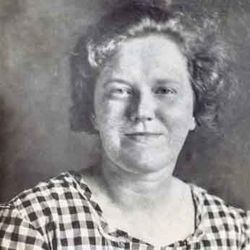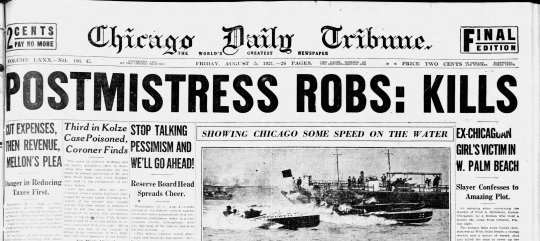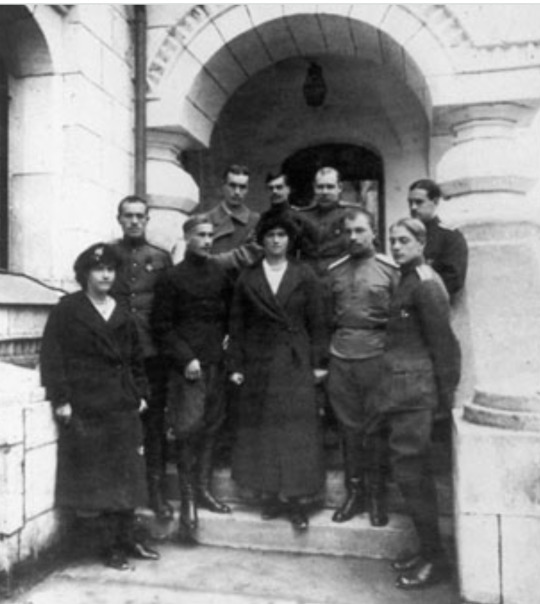#RESTAURANT 1918
Explore tagged Tumblr posts
Video
CAN PEIXEROT-PINTURA-ART-VILANOVA I LA GELTRU-TERRASSA-TAPES-PALMERES-PAISATGES-CEL-ENNOVULAT-PINTOR-ERNEST DESCALS por Ernest Descals Por Flickr: CAN PEIXEROT-PINTURA-ART-VILANOVA I LA GELTRU-TERRASSA-TAPES-PALMERES-PAISATGES-CEL-ENNOVULAT-PINTOR-ERNEST DESCALS- Escenas con paisajes, movimiento y vida en la ciudad de VILANOVA I LA GELTRÚ en la Comarca del Garraf, costas de Barcelona, Catalunya marítima, en un día nuboso y con viento, las personas no quieren renunciar a sentarse en la terraza del Resturant CAN PEIXEROT, en el Passeig Marítim, para comer su apetitosas tapas de pescado, entre las palmeras, destacan las ventanas azules de su fachada. Pintura suelta del artista pintor Ernest Descals sobre papel de 50 x 70 centímetros, el objetivo artístico es captar el momento y la influencia del clima concreto. Acuarelas y gouache que permiten el trabajo fluido con sus calidades expresivas y plásticas.
#PEIXEROT#RESTAURANT#RESTAURANTE#RESTAURANTS#RESTAURANTES#VILANOVA I LA GELTRU#GARRAF#BARCELONA#CATALUNYA#LITORAL#CATALONIA#CATALUÑA#CUINA DE MAR#RESTAURANT 1918#TERRASSA#TERRAZA#TAPES#TAPAS#PALMS#PALMERES#PALMERAS#COMER#PAISATGE#PAISATGES#LANDSCAPE#LANDSCAPING#PAISAJE#PAISAJES#PAISATGISME#PAISATGISTE
0 notes
Photo

Only $0.50 for Tete de veau (calf's head), vinaigrette at The Mouquin Restaurant and Wine Co.? Bargain! http://menus.nypl.org/menus/32513
#menubot#What's On The Menu?#NYPL#1918#The Mouquin Restaurant and Wine Co.#Tete de veau (calf's head)#vinaigrette
3 notes
·
View notes
Text


Digital art and the Sketch (◕ᴗ◕✿)
Transcripts below
Toitsuka reita: So there was this hot chick and blah blah blah
Aiura mikoto: Kusuo~ why don't we all go to the store and find some new clothes, and blah blah blah
Akechi touma: Recipes for coffee jelly appear in cookbooks published in England as early as 1817. The earliest recipes call for coffee to be mixed with calves' foot jelly and sometimes call for isinglass or other clarifiers. After the introduction of packaged gelatin, most recipes call for the gelatin to be dissolved in the hot coffee and then molded.
In the early 20th century coffee jelly was promoted as a healthier alternative to hot coffee, as it was thought the gelatin would absorb excess acid in the stomach.
Jell-O launched a short lived coffee gelatin mix in 1918, but the dessert never gained widespread popularity outside of New England. Today, coffee jelly may still be found in Rhode Island, Massachusetts and other New England states. Durgin-Park restaurant in Boston, which opened in 1827, still offered coffee gelatin made with leftover coffee from the previous day as of 2016 blah blah blah
#the disastrous life of saiki k.#tdlosk#aiura mikoto#toritsuka reita#akechi touma#saiki kusuo#after rewatching the entire show + the special#I've started reading the manga recently and it's been fun :>#I'm probably gonna read some more after posting this#right now on Chapter 8#and I'm all so proud of how the overall drawing turned out <3#layaway doodles#psykickers
74 notes
·
View notes
Text






Lunch in Los Alamos, CA. A really charming, no-stoplight town. The building captured behind the 1918 sign is Bell's, a Michelin star restaurant that my sister casually walked into and asked for a table, lol. We had phenomenal burgers at a roadstand instead.
#the michelin star explains the 90 buck 'chips and dip' starter that my mom thought was a typo#weekend with my fam#trying to reboot
59 notes
·
View notes
Text
Kevin Drum provides a brief rundown of lessons learned from the Covid pandemic. What worked and what didn’t? Masking, closing schools, remote work, far-UVC lighting, restaurant shutdowns and more.
We should be working right now on a Manhattan Project to install better ventilation universally to prepare for a future pandemic. This is especially true in schools, workplaces, and other high-traffic areas.
This was what we did in reaction to the flu pandemic of 1918 and it worked. If we could do it in 1918, we can do it today.
46 notes
·
View notes
Text

And now we are finally free
Prague, 18th of October 1918
He had shed so many tears for her during the last centuries, his soulmirror, his sister in anything but blood since centuries. Kjetil had expected anything and nothing from their visit to Vienna to court the Holy Roman Emperor on the eve of the Torestenson war - he had expected anything but to find a friend that would grow so close to his heart.
His own independence, finally, finally, had been agreed upon thirteen years ago, but Austria's grip around Czechia and Slovekia had still been tight, but now. Now they were here and Hedvika looked so stunning and he would have payed anything, anything to see her so happy and carefree but there was no need to, because now he had her. Now they had the freedom to see each other whenever they wanted. To reinvent themselves. To reconcil with those that they had lost. To forgive, but he wouldn't bring that up, he figured while helping her readjust the crown on her head.
Her smile was worth the stars, and he made sure that she knew. He had made sure she knew her worth during her Dark times like she had made sure he wouldn't give up on himself during the four hundred years or night. If this wasn't the purest form of love, then what was?
Art commissioned by Vy Bóis on Tumblr
Czechia and Norway was never a pair I was thinking about until realising that, like the Germans, the Norwegians are all in love with Three Wishes for Cinderella - and that the Norwegian government funded the restauration of classical Czech movies.
Then I dug deeper and realised that a lot of historical struggles are similar for the both of them, like loss of language, loss of cultural and historical importance and a foreign empire that ruled over them in an absolute manner.
Together with a dear fellow rper I have been exploring this ship for ages and as always with my rarepairs, i got them commissioned by talented Vy Bói!
#hetalia#historical au#aph norway#hws norway#aph czechia#hws czechia#NorCzech#aph nordics#aph#hws hetalia#hws#historical hetalia
50 notes
·
View notes
Text
The Imperial Tea House, Bigg City

The Imperial Tea House opened for business in 1918, forming the cornerstone of what would become Bigg City's thriving Chinatown. It was separated into two businesses: a restaurant that quickly became popular due to its authentic dishes and generous portions on the ground floor, and a much more opulent Tea House on the upper floor. The Tea House was much more expensive in comparison to the restaurant, but its plush decoration and high-class menu made it a desirable place to be invited.
Zebedee was a regular sight on both floors, and due to some strategic 'accidental' oversights when it came to declaring certain cargo, along with his fluency in Mandarin, he had a lot of favour with the owners. This resulted in the Z-Stacks enjoying not insignificant discounts and even the occasional freebie when they visited (Zip and Zug were especially happy about this when they were able to take their mothers to the Tea House without burning through a whole paycheck).
When Zoanna joined the Z-Stacks, she and Zebedee would visit the Tea House regularly to catch up.
#biggsodorcitystories#bscs rambling#bscs art#this is tugs#tugs humanized#tugs zebedee#tugs zoanna#tugs oc#zero fleet#zed stacks#z stacks#chinese restaurant#chinese tea#1920s#tugs headcanons
15 notes
·
View notes
Note
In the latest Jeeves And Wooster short story, Bingo says that waitresses were absolutely uncommon before WW1/the 1918 armstice:
“Have you lunched here yet?”
“No. Why?”
“They have waitresses instead of waiters.”
“Good Lord! I thought that went out with the armistice.” Bingo mused a moment, straightening his tie absently.
Was it scandalous to work as a waitress before the war?
I think you might have misinterpreted what Bingo is saying here. The stuffy old-fashioned Senior Liberal club is the one with the waitresses. The lively Drones club, full of young people, has waiters.
That said there was a hint of scandal around waitresses in earlier times. Pre-1900 or so, waitresses were the norm in tea-shops (i.e. places that would also have a lot of female customers) but not so much in upmarket restaurants, and I assume virtually never in an environment as masculine as gentlemen's clubs. Waiters, unhappy at women potentially taking what they saw as "their" jobs, sometimes sought to associate waitresses with prostitution. More on that here.
That began to change in the early 1900s and accelerated in WW1, where any able-bodied man was expected to fight, leaving women to pick up all manner of what had traditionally been men's jobs. Then, when the war ended, men returned and in many cases took their old jobs back. Presumably that's what Bingo and Bertie are used to seeing - pre-war, there were waiters; in the war years, you had waitresses; post-war, back to waiters.
What I don't quite understand is why what's otherwise being presented as the more formal and traditional of the two clubs is the one that hasn't reverted to having waiters. Possibly this is a joke about Liberalism that I don't know enough about 1920s politics to understand? Or possibly I'm reading too much into it.
19 notes
·
View notes
Text


Esther Jones was known on stage by many names, including “Baby Esther,” “Little Esther,” “Farina’s Kid Sister,” and “Miniature Florence Mills,” is widely, although not universally, credited with being the inspiration for the Betty Boop cartoon character. Jones was born Esther Lee Jones in 1918 in Chicago, Illinois, to William Jones and Gertrude Jones.
In 1928, the Jones family moved to Harlem, New York. At seven, Jones was later known for adopting the popular singing style, scat, which emphasized the baby-style of “b” and “d” sounds and nonsense syllables such as Boo-Boo-Boo’ and ‘Doo-Doo-Doo.’ Consequently, she was a sought-after child performer in the city, and was a fixtured entertainer in the famous Cotton Club and the Everglades Nightclub in New York City during the latter years of the Harlem Renaissance. She added to her entertainment fame by become an extraordinary black-bottom dancer.
In 1929, Jones was taken to Spain, where she was called “La Pandilla.” Later she performed before Sweden’s Queen Sophie Marie Viktoria and King Gustaf V, in Stockholm. Despite her notoriety, she also experienced blatant racism when denied a glass of milk in an American-operated restaurant in Stockholm. The business, however, was forced to close after her treatment there became public knowledge.
Jones performed at the Moulin Rouge, Casino de Paris, and the Empire in Paris, France. There she was dubbed the “Miniature Josephine Baker.” While in Europe, she was paid an average $750 per week for her performances and by age 11, Jones was the highest-paid child on stage globally. After performing, Jones would go backstage to play with dolls. Whenever she performed, both parents were in attendance.
In 1930, Fleisher Studios in Hollywood introduced the cartoon character Betty Boop. Jones, however, received no royalties or performing credits despite the fact that a lawsuit would eventually expose Betty Boop’s true origins. The lawsuit ironically was brought by Helen Kane, a white performer, who sued Fleisher Studios for appropriating her “Betty Boop” character without her permission and without the payment of royalties. Over the course of the Fleisher Studios v. Kane trial, it was revealed that Kane had begun mimicking Jones’ scat act and even sang the same song, “I Want to Be Loved By You’ including the “Boop-Boop-a-Doop” reference. When Kane lost the lawsuit, other studios felt emboldened to promote the Betty Boop character but it recognized neither Kane or Jones as the source.
In 1934, Jones, now 16, performed in Philadelphia at a midnight benefit performance for the NAACP. That same year, she gave a stellar performance at the American Embassy in Rio de Janeiro, Brazil at the request of then Ambassador Jefferson Caffery. Brazil’s President Getúlio Dornelles Vargas, was in the audience and praised the performance and performer.
By 1940, however, the entertainment career of now 22-year-old Esther Jones, was over. She was no longer a child singing or dancing sensation. Esther Jones, now widely credited with influencing the iconic sex symbol Betty Boop, died in 1984 in New York City from liver and kidney complications. She was 66. Regardless of her role in the development of the Betty Boop cartoon character, Jones should be remembered as a child star with a brief but remarkable career in the entertainment industry.
•••
Esther Jones fue conocida en el escenario por varios nombres, incluyendo: “Baby Esther (Bebé Esther),” “Little Esther (Pequeña Esther),” “Farina’s Kid Sister (Hermanita de Farina),” y “Miniature Florence Mills (Florence Mills en miniatura). Generalmente, pero no universalmente, acreditada con ser la inspiración del personaje de caricatura, Betty Boop. Esther Lee Jones, nació en 1918 en Chicago, Illinois a sus padres William Jones y Gertrude Jones.
En 1928, la familia Jones se mudó a Harlem, Nueva York. A la edad de siete años, Jones fue reconocida por adoptar el famoso estilo de canto llamado ‘scat’ y resaltaba los sonidos de bebé que sonaban con ‘b’ y ‘d’, junto con sílabas que no tenían sentido como: Boo-Boo-Boo’ y ‘Doo-Doo-Doo.’ Consecuentemente, esto la convirtió en la artista infantil más buscada de la ciudad. Se convirtió en una presentadora fija en el famoso Cotton Club y el club nocturno Everglades en la ciudad de Nueva York, esto fue durante los últimos años del Renacimiento de Harlem. Le agregó más a su fama cuando se convirtió en una bailarina de black bottom (un paso de baile relacionado con el jazz tradicional).
En 1929, Esther fue llevada a España, dónde le llamaban “La Pandilla”. Poco después de eso, hizo una presentación en Stockholm frente a la Reina Sophie Marie Viktoria y el Rey Gustaf V de Suecia. A pesar de su notoriedad, también experimentó racismo muy evidente cuando se le negó un vaso con leche en un restaurante operado por americanos en Stockholm. Sin embargo, una vez que el trato que se le dio se hizo público, obligaron a que el negocio cerrara.
Jones se presentó en Moulin Rouge, Casino de Paris, and the Empire, ubicados en Paris, Francia. Es aquí donde le dieron el apodo de “Josephine Baker en miniatura”. Mientras que estuvo en Europa se le pagaban aproximadamente $750 por semana y con solo once años de edad, Jones era la artista infantil mejor pagada a nivel global. Después de sus presentaciones, ella se iba tras bastidores a jugar con muñecas. Sus padres siempre estaban presentes para las presentaciones.
En 1930, Fleisher Studios de Hollywood introdujo un nuevo personaje, Betty Boop. Y a pesar de que una demanda demostraría el verdadero origen de la caricatura, Jones nunca recibió crédito o derechos. Irónicamente, la demanda fue interpuesta por Helen Kane, una artista que había demandado a Fleisher Studios por apropiarse de su personaje “Betty Boop” sin su permiso y sin pagarle sus derechos. Durante el juicio Fleisher Studios v. Kane, se reveló que Kane había comenzado a imitar el acto de scat de Jones y que incluso cantaba las mismas canciones como ‘I Want to Be Loved By You’ incluyendo la referencia: “Boop-Boop-a-Doop”. Cuando Kane perdió la demanda, otros estudios se animaron a promover al personaje Betty Boop, sin reconocer a Kane o Jones como la fuente.
En 1934, Jones, ahora con dieciséis años de edad, hizo una presentación en Philadelphia para una noche de beneficencia de la Asociación Nacional para el Progreso de la Gente de Color (NAACP). Ese mismo año, a petición del embajador Jefferson Caffery, hizo una presentación estelar en la embajada americana ubicada en Rio de Janeiro, Brazil. El presidente Getúlio Dornelles Vargas se encontraba en la audiencia, elogió la presentación y también a la presentadora.
Para 1940, con veintidós años de edad, la carrera de Esther Jones en la industria del entretenimiento, ya se había acabado. Ya no era una sensación infantil que bailaba y cantaba. Esther Jones, ahora extensamente acreditada con ser la influencia del símbolo sexual, Betty Boop, murió en 1984 en la ciudad de Nueva York, por complicaciones renales y hepaticas. Tenía 66 años. Independiente de su rol en el desarrollo del personaje, Betty Boop; Esther Jones debería de ser recordada como una estrella infantil que tuve una carrera corta pero extraordinaria.
#culture#knowyourhistory#like#follow#newpost#historyfacts#blackgirlmagic#black women#black women matter#blacklivesmatter#blacklivesalwaysmatter#english#spanish#blackhistory#history#share#read#blackpeoplematter#blackhistorymonth#black lives matter#blackgirlsread#blackbloggers#blackownedandoperated#black girl icons#black music#b#black history is american history#blm#betty boop#knowledgeisfree
205 notes
·
View notes
Text

Bjørn Wiinblad (Sept. 20, 1918 - 2006) was a famous Danish artist and designer. He loved working in ceramics, but also as a set designer for theater or within hotel and restaurant decor. His many, many everyday products are still found in millions of homes world wide, and he has works in the Victoria and Albert Museum in London, as well as at MoMA in New York.
His style was very up-beat, almost anti-Scandinavian in its love of squiggles, happy faces and orientalist settings. Here is a design for a Scheherezade-themed quilt:
Femte tema: Forlæg til detalje i Scheherezade-billedtæppe, The Dallas Apparel Mart, 1971 - gouache on paper
#art#danish artist#danish designer#bjørn wiinblad#1970s#quilt#gouache on paper#arabian nights#1001 nights#victoria and albert museum#moma#danish royal academy of fine arts
60 notes
·
View notes
Text






Sam Claflin and Adaptations (there's a lot more than you think!)
Articles and interviews be like: Sam, you have done so many book adaptations and then name at most three titles. Every fucking time. Luckily, I'm here to tell you about them! (Under the cut as it got long.)
Hunger Games Catching Fire and Mockingjay (books written by Suzanne Collins) - YA dystopia. The most obvious, of course. Sam plays Finnick Odair, the coolest character. (He's not dead, Katniss is lying.)
Daisy Jones and the Six (book written by Taylor Jenkins Reid) - story of a rise and fall of fictional band in the 1970s. Sam is Billy Dunne, the main male lead and a real rockstar!
My Cousin Rachel (book written by Daphne du Maurier) - Gothic thriller, 19th century. Sam is the narrator, Philip. This is my personal favourite.
Their Finest - adaptation of Their Finest Hour and a Half (book written by Lissa Evans) - Drama with bits of comedy. Set during WW2 in the film industry. Sam plays screenwriter Buckley, a member of a film crew working on a film about Dunkirk evacuation. Also features a side character who is gay and is alive at the end. More people should watch this film, imo.
Enola Holmes (book written by Nancy Springer) - kiddie Sherlockian pastiche. Sam plays Mycroft Holmes, at least that's his character's name, but it's not the usual Mycroft; his version is dumbed-down and cartoon-villainised so that the eponymous teenage girlboss can have her story.
Adrift - adaptation of Red Sky in the Mourning (book written by Tami Oldham Ashcroft) - survival drama of a seafaring couple lost at sea after a hurricane. Sam is the main character's love interest, Richard.
Two mini series from Sam's early career (that I haven't watched so can't give you any info):
Pillars of the Earth (book written by Ken Follett) - TV mini series set in 12th century about building of a cathedral. This was Sam's very first role.
Any Human Heart (book written by William Boyd) - TV mini series, chronicles a life of a writer in 20th century. Sam plays the youngest version of the main character, Logan.
Adaptations of plays - it counts, okay?
Journey's End (play written by RC Sherriff) - WW1 war film, but not a regular one (there's no battles). Covers a week in the trenches in March 1918. Sam plays Captain Stanhope, an officer at the edge of nervous breakdown. One of his best performances, if not the very best.
Riot Club (play written by Laura Wade) - contemporary film about a posh elite club at Oxford. Sam's character, Alistair, is a spoiled brat, Draco Malfoy-like. (Not the good fanon version, the bad canon version.) Btw, this is no Dead Poet's Society, no dark academia - the titular club is based on Bullingdon Club (of which Boris Johnson was member). They book a table at restaurants, trash them and then hand the owners a cheque to compensate. You see now why we have all these problems...
You can make an argument for:
Snow White and the Huntsman - (folk tale recorded by Brothers Grimm). It's a darker retelling. Sam plays William, the prince charming of the story.
Snow White and the Red Shoes, (as above) an animated film, he voices a character named Merlin. No idea what this is as I haven't seen it.
Okay now I'm stretching it
Pirates of the Caribbean On Stranger Tides - adapted from a Disneyland ride. BUT the ride itself was inspired by legendary tales of pirates, among others the books of Emilio Salgari. So, not that crazy. Might be the weakest of the franchise, but Sam's storyline--he plays the missionary Philip--is what saves it, his romance with the mermaid is just the cutest!
So that's it. Thank you for reading and I hope you check some of these out.
#sam claflin#sam claflin meta#adaptations#samblogging#i KNOW i missed 2 out#i don't talk about them#also everyone knows them anyway#mypost
105 notes
·
View notes
Text
Lena Clarke: The Mail, Murder, and Madness of West Palm Beach
It was a Monday evening, August 1st 1921, and Orlando Police Chief E.S. Vestal had an interesting story presented to him. The woman seated in front of his desk was Lena Clarke and she was insisting someone needed to go to a hotel downtown, specifically to room number eighty-seven, and arrest the thief inside. She identified the criminal as Fred Miltimore, and she promised if they went they would find him there. After making a phone call and verifying who she was, there was no reason for Chief Vestal to not believe her. When he sent the officers out he had no way of knowing what was about to unravel.
By all accounts Lena Marietta Thankful Clarke was a completely normal and highly intelligent child. Born in Vermont in 1886 to a well-known theologian, she, her two sisters, and brother moved around frequently until settling in West Palm Beach, Florida. The family was very successful and Lena, who began reading books on philosophy at the age of six, went on to volunteer her time working with the Red Cross, helping at her local church, and selling war bonds. As they grew older one sister became the West Palm Beach City Librarian, the other opened the first flower shop in Orlando, and her brother had a successful career working for the West Palm Beach post office for eight years until leaving in 1918. 1920 should have been a happy time for the family, but the end of the year marked the turning point in the life of Lena Clarke when her brother unexpectedly died.
After leaving the post office in 1918 due to severe hearing loss, her brother took to becoming an amateur taxidermist and a snake collector, losing his life two years into this new pursuit after being bitten by a coral snake on Christmas morning 1920. The loss would have been shocking to everyone, including his former coworkers at the post office. From 1911 to 1913 Clarke’s brother not only worked there, he was also the postmaster and when his predecessor left the job in 1920 the local businesses began to look to the familiar name of Clarke to fill the roll. Lena had already been working at the post office as an assistant, but a petition was written up for her to be appointed the new postmaster for West Palm Beach and soon thereafter thirty-five-year-old Lena Clarke had the job.

Lena Marietta Thankful Clarke. Image via findagrave.com.
Managing the workings of the post office presented many different tasks and challenges including handling all the mail and postage, war bonds, and money orders, all of which meant there was always a large amount of cash circulating in and out of the building. On July 26th 1921 it seemed it was business as usual when Clarke had two registered mail sacks full of cash sent off to the Atlanta Federal Reserve Bank, but when the sacks arrived in Atlanta and were opened, there was no cash to be found. Instead of the money, between $31,000 and $42,000 depending on varying accounts, the bank found mail order catalogs cut down to the size of dollar bills. Today’s equivalent of almost half a million dollars was missing.
Understandably, Clarke was one of the first people questioned about the disappearance of the money. After all, she was the postmaster of the West Palm Beach post office where the shipment originated from but she insisted she had no idea what had happened to the money. She went home that night and resumed her life until the following week when she hired a driver to take her to Orlando where she checked into room eighty-seven of the San Juan Hotel.
What exactly transpired in the hotel is only known to Lena Clarke and Fred Miltimore, but the version of events that Police Chief Vestal was hearing was as strange as it was simple. Lena checked into the hotel under a fake name and met with Miltimore, a former coworker who once worked as a postal worker with Lena and was now the owner of a restaurant in Orlando. She claimed that she suspected her former coworker of the theft of the money that left her post office on the way to Atlanta the previous week and she confronted him about the crime. This was all interesting but Vestal had one very important question, if he sent officers there how did she know Miltimore would still be in the room and not on the run after their confrontation. Clarke told them she knew he would still be there, because she drugged him with morphine before coming to the police station. When officers arrived at room eighty-seven they did in fact find Miltimore, but he was dead with a bullet to the chest and a gun laying beside him.
When the officers returned to the station Clarke was still there and she was immediately questioned about the dead man in her hotel room. At first she denied that she shot him but she eventually admitted to the killing, claiming that it was Miltimore who stole the money from her post office and that he was going to frame her for the crime so she simply did what she had to do and shot him. Within days Clarke was in jail and charged with first degree murder.

Headline about the murder of Fred Miltimore frpm the Chicago Daily Tribune. Image via newspapers.com
Due to her job and family Lena Clarke was a well-known figure in West Palm Beach but when she was jailed for murder the only thing that soared higher than the shock was her popularity. Her jail cell became more of a sanctuary, and she decorated it herself with some of the many flowers, gifts, and mail she received while in prison. She was even permitted to paint her cell as she pleased and was given a small typewriter to pursue her writing ambitions, eventually taking up poetry and writing her autobiography that she sold through local newspapers for twenty-five cents each. But, for every person sending her flowers there was also a critic and newspapers took to printing cruel commentary on her appearance:
“Lena Mary Thankful Clarke, if you please, is a queer combination —a bundle of contradictions. In personal appearance and dress she is far from attractive. Her figure is heavy and uncorseted and her clothes smack of the backwoods.
Her shoes are generally without heels and her stockings of cotton. Her skin is very fine in texture but covered with large, disfiguring freckles. Miss Clarke’s only assets in appearance are her hair, which is decidedly Titian and naturally wavy, and her eyes, deep blue in color and absolutely straight and unwavering in their gaze.”

Headline about Lena Clarke writing poetry in prison from the New York Times. Image via palmbeachpast.org.
Despite the criticism she seemed to be rather calm and comfortable for an alleged cold-blooded murderer, but that part of her story changed. Lena recanted her confession, now claiming she never told the police that she was involved in the death of Fred Miltimore and that in reality she was so worried about the missing money that she at one point considered taking her own life. The stress of the situation was so bad that she said she could not remember exactly what transpired between the two the night of the murder. And what of that missing money? That story also changed multiple times. After her initial confession Lena later told Chief Vestal that in 1918 while she was working as an assistant to the postmaster there was a shortage of $38,000. She claimed she had always suspected Miltimore and feared he would somehow blame her for the theft in order to ruin her chance at one day becoming the new postmaster. She then told Chief Vestal that this recent theft of money was her fault, that it was done to cover the lingering debt from the 1918 money that she suspected Miltimore of taking. Somehow, this very convoluted story led up to her being in a hotel room with Miltimore, confronting him about the initial crime and begging him to sign a statement that he was in fact responsible for the 1918 theft which he refused to do before ending up dead. In another version of events given later while she was behind bars, Lena reportedly stated that this recent theft was a standalone crime and that yes money was stolen in 1918 but a man named Joseph Elwell loaned her enough money to cover up the loss. There were some major problems with this story, one being that Elwell could not be questioned because he had been shot and killed in New York City in 1920. Another issue is that the missing money that was replaced in the mail sacks with cut up catalogs a week before the Miltimore murder was traced directly back to Lena and her bank accounts.
The story of a man named Joseph Elwell helping Lena at some point was interesting to the police, not because of Elwell personally, but because it supported a theory of theirs. During the investigation multiple people tried desperately to find “who else” was involved in the crime for a simple reason, they could not believe that Lena had forged this plan and committed murder on her own because they felt very strongly that this could not have been carried out by a woman. Multiple leads were followed trying to rope a male accomplice into Miltimore’s murder but eventually they had to admit there was no evidence. Whatever transpired in room eighty-seven of the San Juan Hotel was committed by Lena and Lena alone.

Newspaper article showing Lena Clarke and Fred Miltimore. Image via newspapers.com.
The trial of Lena Clarke was bound to be unusual, but what unfolded in the courtroom was outright baffling. Lena’s family came together and hired multiple law firms for their daughter and their defense of insanity was hard to argue with once Lena herself spoke. As she took the stand she placed an item down in front of her, a crystal ball, and she began to tell her bizarre story. In this lifetime, yes, she was Lena Clarke but this was not her first time here, according to her this was her thirteenth life here on Earth.
Those seated in the courtroom listened as Lena gazed into her crystal ball and described in detail her twelve previous lives including when she was the goddess Isis in ancient Egypt, the lifetime that ended when she was eaten by lions, the time where she was friends with Shakespeare and inspired the character of Ophelia, and of course her first life where she was present in the Garden of Eden alongside Adam and Eve when the universe was created. This may have been her thirteenth life, but she also knew it was going to be an eventful one. She already knew she was going to be found not guilty because next for her was serving as the Vice President of the United States before becoming President after the death of the head of the Socialist party President Eugene V. Debs. The subject of Lena’s sanity was part of many conversations about the crime and many, including Miltimore’s daughter, expressed the belief that Lena was “subject to hereditary insanity.”
In order to clear out the thick speculation, three psychiatrists were brought into the case to professionally evaluate Lena’s sanity. They were split on their decisions. Two believed she truly was insane, the third believed that she did know right from wrong when she chose to end Miltimore’s life. It only took the jury three hours to decide. On December 3rd 1921 Lena Clarke was found not guilty of first degree murder by reason of insanity and was to be committed to the Florida State Mental Hospital at Chattahoochee. Upon hearing her fate Lena was distraught, stating “I would rather be hung and buried here than go to Chattahoochee.”
Lena entered the Florida State Mental Hospital, but she did not have to mourn her fate for long, in less than two years she was released and she moved back home to West Palm Beach with her sister Maude and their mother. The remainder of Lena’s life passed by quietly. She did work for her church and the Red Cross with her name appearing in various newspaper articles about relief efforts in the 1940s and 1950s and she continued writing poetry and various works on church history. Her name, once emblazoned on newsprint next to words like “murder” and “insanity” remained largely out of the spotlight. She kept to herself, taught Sunday School, and continued to live with family members before passing away in 1967 at the age of eighty-one years old.
Today Lena Clarke lays at rest next to her sister in the Woodlawn Cemetery of West Palm Beach, Florida.
*****************************************************
Sources:
Bisbee daily review. [volume] (Bisbee, Ariz.), 14 Aug. 1921. Chronicling America: Historic American Newspapers. Lib. of Congress. <https://chroniclingamerica.loc.gov/lccn/sn84024827/1921-08-14/ed-1/seq-7/>
Kleinberg, Eliot. “Florida History: The Story of West Palm Beach’s Murderous Postmistress.” The Palm Beach Post, Palm Beach Post, 9 Jan. 2022, www.palmbeachpost.com/story/news/2022/01/09/lena-clarke-mysterious-murderous-postmistress-west-palm-beach/9084494002/.
Morrow, Jason Lucky. The Murdering Postal Woman, Lena Clarke, 1921, Historical Crime Detective, www.historicalcrimedetective.com/the-murdering-postal-woman-lena-clarke-1921/.
Pedersen, Ginger. “Going Postal, 1920s Style - The Strnage Case of Lena Clarke.” Going Postal, 1920s Style – The Strange Case of Lena Clarke, Palm Beach Past, 30 July 2021, palmbeachpast.org/2021/07/going-postal-1920s-style-the-strange-case-of-lena-clarke/.
Schiefer, Christine, and Em Schulz. A Haunted Road Atlas: Sinister Stops, Dangerous Destinations, and True Crime Tales. Andrews McMeel Publishing, 2023.
The Washington times. [volume] (Washington [D.C.]), 08 Aug. 1921. Chronicling America: Historic American Newspapers. Lib. of Congress. <https://chroniclingamerica.loc.gov/lccn/sn84026749/1921-08-08/ed-1/seq-3/>
#husheduphistory#featuredarticles#history#forgottenhistory#strangehistory#truth is stranger than fiction#tragictale#florida history#truecrime#famouscrime#weirdstory#weird history#famoustrial#history class#tragic history
3 notes
·
View notes
Photo

Welcome to The Mouquin Restaurant and Wine Co., may I recommend the Asparagus tips au gratin? http://menus.nypl.org/menus/32513
0 notes
Text
Birthdays 11.7
Beer Birthdays
Gary Fish (1956)
Steve Altimari (1960)
Jason Petros (1977)
Five Favorite Birthdays
Albert Camus; French writer (1913)
Marie Curie; French chemist, physicist (1867)
Al Hirt; trumpet player (1922)
Joni Mitchell; Canadian singer, songwriter (1943)
Morgan Spurlock; documentarian (1970)
Famous Birthdays
Ignaz Brüll; Austrian pianist and composer (1842)
Nellie Campobello; Mexican writer (1900)
James Cook; English explorer, naval officer (1728)
Gédéon Tallemant des Réaux; French author and poet (1619)
Francisco de Zurbarán; painter (1598)
Ed Dodd; cartoonist (1902)
Poppin’ Fresh; Pillsbury Doughboy character (1965)
Madeline Gins; poet and architect (1941)
Billy Graham; television evangelist (1918)
Ibn Hazm; Arab philosopher (994 C.E.)
Dean Jagger; actor (1903)
Norman Krasna; film director, screenwriter & playwright (1909)
R. A. Lafferty; author (1914)
Lorde; New Zealand singer-songwriter (1996)
Konrad Lorenz; Austrian zoologist (1903)
Herman J. Mankiewicz; film director & screenwriter (1897)
Kitty Margolis; jazz singer (1955)
Jan Matulka; Czech-American painter (1890)
Norah McGuinness; Irish painter (1901)
Lise Meitner; physicist, mathematician (1878)
Philip Morrison; astrophysicist (1915)
Lucas Neff; actor (1985)
Lawrence O'Donnell; journalist and talk show host (1951)
Paul Peel; Canadian painter (1860)
Dana Plato; actor (1964)
C.V. Raman; Indian physicist (1888)
Charles Ranhofer; Delmonico’s Restaurant chef, author of “The Epicurean” (1836)
Johnny Rivers; rock singer (1942)
Jean Shrimpton; English model (1942)
Antonio Skármeta; Chilean author (1940)
Ellen Stewart; film director (1919)
Joan Sutherland; Australian opera singer (1926)
Judy Tenuta; comedian (1949)
Leon Trotsk;, Russian theorist and politician (1879)
Lesser Ury; German painter (1861)
Andrew Dickson White; historian (1832)
1 note
·
View note
Text
Feodorovsky Gorodok and Feorodovsky Cathedral

FEODOROVSKY GORODOK
Across Alexander Park, down the path from the Alexander Palace, is Feodorovsky Gorodok, a tiny old Russia-style town built by Nicholas II in the first decade of the 20th century. The Tzar wanted the town to have the atmosphere of an old Russian town. This historic atmosphere would frame the Alexander Palace.
The Feodorovsky Gorodok (Town), included the Feodorovsky Sovereign Cathedral, the Martial Chamber, the infirmary of Grand Duchesses Anastasia and Maria, the former barracks of His Imperial Majesty’s Own Convoy, and the Tsar’s Railway Pavilion. There was much more Nicholas wanted to do in the Gorodok, but the First World War halted his plans, while the revolution ended them completely. The buildings surviving unchanged are the Feodorovsky Cathedral and the Martial Chamber (now the Museum of the History of the First World War).
Reportedly, the restoration of the Gorodok has begun. The area has not been completely abandoned: A fully functioning privately owned restaurant is in one of the courtyards. The former Grand Duchesses Maria and Anastasia’s infirmary and the buildings in the courtyard behind it have been converted to boarding rooms for the elderly who are too poor to afford housing and food.


1. The Tsarkoe Selo Train Station as it stood in the 20th century 2. What is left of the station, which is being restored

3. The barracks of his Imperial Majesty's Own Convoy


4. Maria and Anastasia's Infirmary. 5. Maria and Anastasia posing with officers at the entrance of the infirmary.


6. Badly damaged wall and tower. 7. Restoration work taking place.

FEODOROVSKY SOVEREIGN CATHEDRAL
The foundation of the Cathedral was laid on 20 August 1909, in the presence of Emperor Nicholas II and his family. The construction was financed by the tsar’s family.
The Feodorovsky Sovereign Cathedral became the house church for Emperor Nicholas II and his family. The Cathedral consisted of two churches, the upper which included the main altar dedicated to the Feodorovsky Icon of Our Lady and a side-chapel consecrated in honor of the Moscow Metropolitan Alexis, the all-Russia Miracle-Worker. The lower part of the Cathedral housed a Cave Church with the altar consecrated in the name of Saint Serafim of Serov the Miracle-Worker, and the private chapel of Emperor Nicholas II and Empress Alexandra Feodorovna. The Feodorovskaya icon of Our Lady, the main icon of the Cathedral, is the patroness of the Romanov dynasty. The icon was kept in the upper church.
In 1913-1917 the Martial Chamber complex was built near the cathedral. At the start of the war against Germany in 1914 it was decided to open a portrait gallery of the holders of the St. George Cross in the Chamber building. In 1918 the art collections were divided among various museums in Leningrad.
In 1991 the Feodorovky Sovereign Cathedral opened its doors to believers again. The entire complex of buildings is closely connected with the Russian Orthodox Church and with the life of the last Russian Emperor; the church allocates funds for the restoration work. The Feodorovsky Sovereign Cathedral was reconsecrated on 29 February 1992. Regular liturgies are carried out in the Cave Church. Renovation of the Cathedral was finished in 2013, the 300th anniversary of its original construction.








Inside view - the icons of Alexandra and Nicholas can be seen in the background
Main entrance
Outside view of the cathedral and a bust dedicated to Nicholas II
A view of the inside
Entrance to the "cave church" where the Emperor and his family worshipped
The Emperor's Stairs (to the lower church)
The lower church as it looks today. No photos were located for the intimate atmosphere of this chapel to be recreated. The design is modern.
#russian history#imperial russia#romanov family#Tsarkoe Selo#Nicholas II#Feodorovsky Godorov#Feodorovsky Sovereign Cathedral#OTMA
12 notes
·
View notes
Text
Yay is my birthday wooo!!!! I am Very Old now, and I know the answer to life, the universe, and everything! :)
Got a reservation at a Cajun restaurant we haven't been to before later tonight. Looking forward to some spicy shrimp. :) It's in an house that was built in 1918 and they have a jazz band on the second floor, so should be fun.
I hope you all have a great day today wooo!!!
37 notes
·
View notes